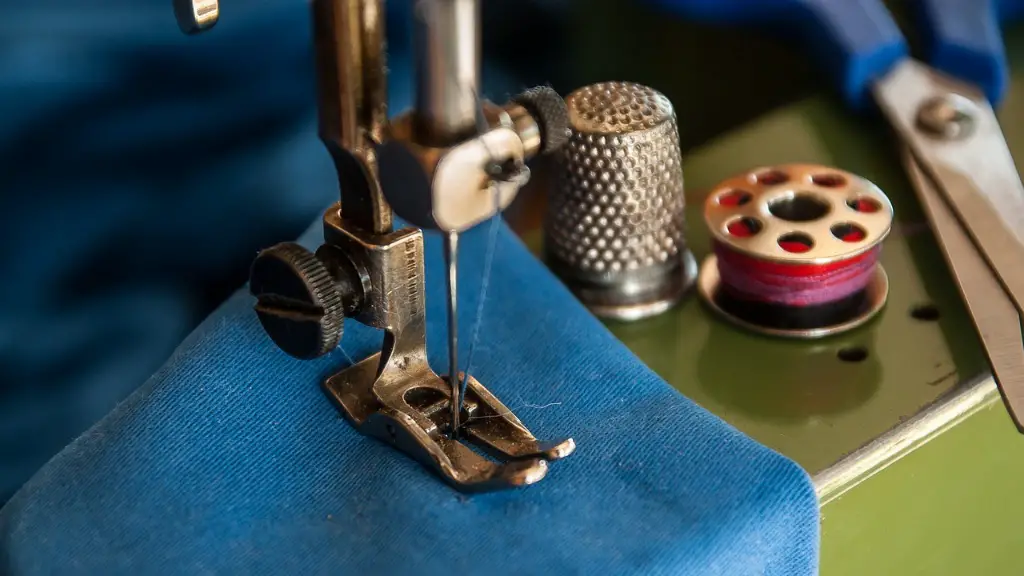What you need before beginning
Hemming a skirt on a sewing machine is an exciting yet exacting task. Before you begin, make sure you have the right tools to trim and finish the skirt correctly. A pair of very sharp scissors, fabric marking pens, tailor’s chalk or tailor’s tape and a basic sewing machine will all be necessary for this project. You will also need some spare pieces of your fabric, as well as thread that matches or contrasts in colour. Of course, you’ll also need the skirt you’re intending to hem.
Gather the skirt to the correct length and pin it
First of all, try on the skirt and decide how long it should be. Making sure it fits nicely but still looks proportional, pin the fabric above the hem to the desired length. Leaving plenty of extra fabric, mark a line above this with a marking pen or tailor’s tape and then trim the skirt to this line. Cut from the top and be sure to cut completely straight. Double-check the length and then clip the edges with scissors to ensure it doesn’t fray.
Iron and press the fabric
After cutting and pinning, iron the fabric and press it flat. This will make it easier to sew and ensure that it looks neat and crisp when done. Make sure you use the correct heat setting on your iron to accommodate the type of fabric that you are working with, as some fabrics can become damaged with too much heat.
Sewing the hem
Start by folding the hem up as evenly as possible. Pin this in place, but make sure to leave at least one additional inch of fabric above the hem. This will be used to create a finished edge so that the dress won’t unravel when the hem is finished. Now, using a straight stitch on the sewing machine, sew from the top of the hem to the bottom. Make sure to use a thread that matches or contrasts with the fabric of the skirt. Remember to be as accurate as possible when you’re stitching the hem, as any imperfections will become more visible when the skirt is finished.
Finishing the seam
Once you have sewn the hem, you can use an overlock stitch or a zigzag stitch in order to prevent the fabric from fraying. If you choose an overlock stitch, use thread that matches or contrasts with the fabric, and stitch along the inside of the hem. For a zigzag stitch, use a wide stitch and stitch along the outside edge of the hem. Remember to take your time, as any mistakes made here will be very visible when the skirt is finished.
Ironing and press the skirt
Once the hem has been sewn and finished, iron and press the fabric to make it look crisp and neat. Once you’ve done that, try on the skirt and make sure it fits correctly and is not too tight or too loose. If it does not fit correctly, you will need to make any necessary adjustments, such as taking in the sides or altering the hemline.
Checking for loose threads
Finally, it’s time to check for any loose threads. Any loose threads should be trimmed off and the hem should be lightly ironed once more to make sure that everything looks neat and tidy. Your skirt is now successfully hemmed!
Sewing Invisible Hem
When hemming a skirt, it’s also possible to use an invisible hem. To do this, first of all, fold and press the fabric so that the raw edges of the fabric are tucked inside. Using a small straight stitch, sew along the inside edge of the fabric, catching the hem on the inside and making sure that the stitches are hidden on the outside. There should be no visible stitching from the outside at all.
Using Fusible Web Tape
Fusible web tape is an adhesive that can be used to create an invisible hem. First, fold the fabric and press it flat. Cut the fusible web tape to the width of the hem and place it along the raw edge of the fabric. Now, press the fusible web tape in place with an iron. The fabric should be sandwiched between the two pieces of fusible web, with the adhesive side facing the inside. Finally, sew along the edge of the fusible web tape to secure it in place.
Using a Serger
If you have a serger, you can use it to hem a skirt as well. To do this, first of all, fold the hem fabric and press it flat. Now thread the serger, making sure to select the appropriate settings for your fabric. Now, using the serger, sew along the inside edge of the fabric, catching the hem and securing it in place.
Using a Felled Hem
A felled hem is a hem that is sewn on the inside of the garment, creating a neat and finished edge on the outside. To create a felled hem, first of all, fold the hem and press it flat. Now, cut strips of fabric to make binding strips – these should be between 1/2 and 3/4 of an inch wide. Now sew the binding strips together, creating a line of stitching that covers the raw edges of the fabric.
Applying the Felled Hem
Now the binding strips are ready to apply. Position the binding strips on the inside of the garment, and stitch them in place. Make sure to stitch in the ditch of the binding strip – this will ensure that the binding strip is securely attached to the fabric. Finally, press the fabric along the binding strip to make sure that it is completely secured.



